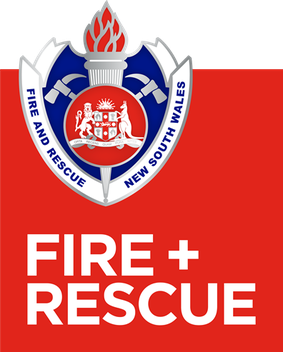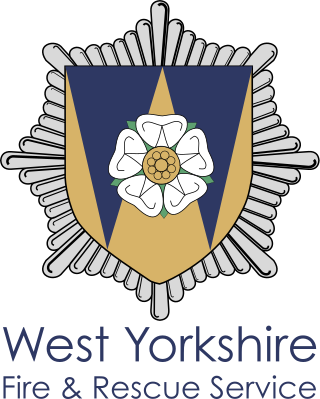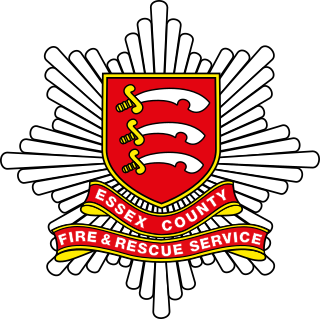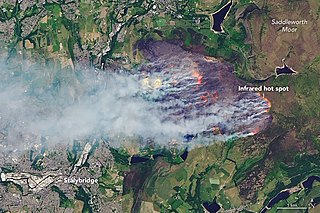
West Midlands Fire Service (WMFS) is the fire and rescue service for the metropolitan county of West Midlands, England. The service has 38 fire stations, with a blended fleet of vehicles and specialist resources.

The London Fire Brigade (LFB) is the fire and rescue service for London, the capital of the United Kingdom. It was formed by the Metropolitan Fire Brigade Act 1865, under the leadership of superintendent Eyre Massey Shaw. It has 5,992 staff, including 5,096 operational firefighters and officers based at 102 fire stations.
The New Zealand Fire Service was New Zealand's main firefighting body from 1 April 1976 until 1 July 2017 – at which point it was dissolved and incorporated into the new Fire and Emergency New Zealand.

The Buncefield fire was a major fire at an oil storage facility that started at 06:01 UTC on Sunday 11 December 2005 at the Hertfordshire Oil Storage Terminal, located near the M1 motorway, Hemel Hempstead, in Hertfordshire, England. The terminal was the fifth largest oil-products storage depot in the United Kingdom, with a capacity of about 60 million Imperial gallons of fuel. The terminal is owned by Total UK Limited (60%) and Texaco (40%).

Tire fires are events that involve the combustion of large quantities of tires, usually waste tires, typically in locations where they are stored, dumped, or processed. They exist in two forms: as fast-burning events, leading to almost immediate loss of control, and as slow-burning pyrolysis which can continue for over a decade. They are noted for being difficult to extinguish. Such fires produce much smoke, which carries toxic chemicals from the breakdown of synthetic rubber compounds while burning.

Fire and Rescue NSW (FRNSW) previously known as NSW Fire Brigades (NSWFB), is a agency of the New South Wales Government, Australia. FRNSW is responsible for firefighting, rescue and HAZMAT services in the major cities, metropolitan areas and towns across New South Wales. Fire and Rescue NSW is the fourth largest urban fire service in the world, with over 6,800 firefighters serving at 335 fire stations throughout the state, supported by 465 administrative and trades staff and 5,700 community fire unit volunteers. FRNSW are the busiest fire service in Australia, attending over 124,000 incidents a year.

A sky lantern, also known as Kǒngmíng lantern, or Chinese lantern, is a small balloon made of paper, with an opening at the bottom where a small fire is suspended.

The West Yorkshire Fire & Rescue Service (WYFRS) is the county-wide, statutory emergency fire and rescue service for the metropolitan county of West Yorkshire, England. It is administered by a joint authority of 22 people who are appointed annually from the five metropolitan boroughs of West Yorkshire, known as the Fire & Rescue Authority.

Essex County Fire and Rescue Service (ECFRS) is the statutory fire and rescue service for the county of Essex in the east of England, and is one of the largest fire services in the country, covering an area of 1,338 square miles (3,470 km2) and a population of over 1.7 million people.

Warwickshire Fire and Rescue Service is the statutory fire and rescue service serving the county of Warwickshire in the West Midlands region of England.

Humberside Fire and Rescue Service (HFRS) is the statutory fire and rescue service covering the area of what was the county of Humberside (1974–1996), but now consists of the unitary authorities of East Riding of Yorkshire, Kingston upon Hull, North Lincolnshire and North East Lincolnshire in northern England.

Lincolnshire Fire and Rescue (LFR) is the statutory fire and rescue service serving the non-metropolitan county of Lincolnshire in the East Midlands Region of England. This does not include North Lincolnshire and North East Lincolnshire, which are covered by Humberside Fire and Rescue Service.
Staffordshire Fire and Rescue Service is the statutory fire and rescue service responsible for fire protection, prevention, intervention and emergency rescue in the county of Staffordshire and unitary authority of Stoke-on-Trent. The county has a population of 1,126,200 and covers a total area of 2,260 km2. Staffordshire shares the majority of its border with Derbyshire, Cheshire, West Midlands (County) and Shropshire; although, in much shorter stretches, the county also butts up against Worcestershire, Warwickshire and Leicestershire.

Suffolk Fire and Rescue Service (SFRS) is the statutory fire and rescue service covering the county of Suffolk in East Anglia, England. It was formed in 1948 as the Suffolk & Ipswich Fire Service, before changing after the 1974 Local Government Review to 'Suffolk Fire Service'. Following the 2004 Fire & Rescue Services Act, the service name was changed to Suffolk Fire & Rescue Service to better reflect its role. Suffolk has a population of 760,556 and covers 1,466 square miles (3,800 km2). The county town is Ipswich with other major towns including Lowestoft, Bury St-Edmunds, Felixstowe and Newmarket.

The Scottish Fire and Rescue Service is the national fire and rescue service of Scotland. It was formed by the merger of eight regional fire services in the country on 1 April 2013. It thus became the largest fire brigade in the United Kingdom, surpassing the London Fire Brigade.

Fire and Emergency New Zealand is New Zealand's main firefighting and emergency services body.

Starting on 24 June 2018 and continuing throughout the summer, a record-breaking series of wildfires burned across the United Kingdom. The two largest fires, which were declared major incidents, burned over 7 square miles each and broke out on Saddleworth Moor in Greater Manchester and Winter Hill in Lancashire. Other large fires broke out in Glenshane Pass in County Londonderry, Northern Ireland, Epping Forest, in London and in the Vale of Rheidol in Ceredigion, Wales. The Saddleworth Moor fire has been described as the largest English wildfire in living memory. Most of the wildfires occurred during the first official heatwave in the United Kingdom since June 2017, with temperatures reaching above 30 °C (86 °F) for several days, making the hottest June in the country since 1995, and the driest June for over ten years in large parts of the United Kingdom, exacerbating the crisis. A wildfire started on the Staffordshire Moorlands on 9 August and, despite rain, had spread to cover 219 acres by 11 August. Some hot spots were still burning as at 22 August. In total, there were 79 fires over the course of the year, a new record. However, the record was beaten in 2019 with 96 fires as of April 23.

The 2018 West Footscray warehouse fire was a major industrial fire that occurred in the border of West Footscray and Tottenham, an inner-western suburb of Melbourne, Victoria, Australia, beginning on 30 August 2018. The fire took the Metropolitan Fire Brigade several days to fully control and emitted a large plume of toxic black smoke, visible across Melbourne.

On Tuesday, 22 October 2019, a fire broke out on the roof of the New Zealand International Convention Centre in Auckland, New Zealand. The convention centre is to become part of the SkyCity complex and was undergoing construction by Fletcher Construction, due for completion before the end of the year. The site was occupied by construction workers at the time and was not open to the public.

The 2022 United Kingdom heatwaves were part of several heatwaves across Europe and North Africa. The United Kingdom experienced three heatwaves; the first was for three days in June, the second for three days in July, and the third for six days in August. These were periods of unusually hot weather caused by rising high pressure up from the European continent. There were also more grass fires and wildfires than average, and in August a drought was declared in many regions.



















